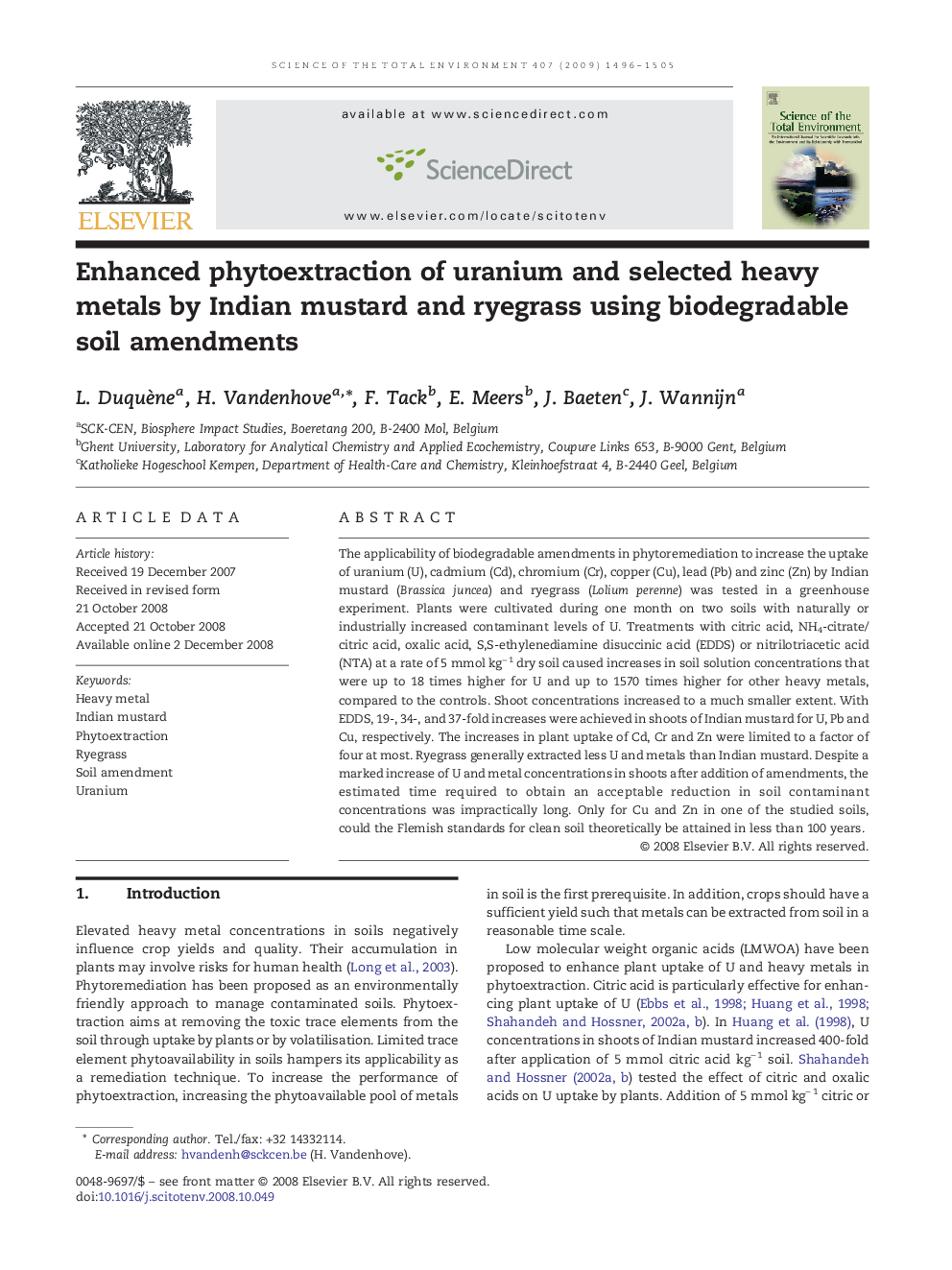| Article ID | Journal | Published Year | Pages | File Type |
|---|---|---|---|---|
| 4432118 | Science of The Total Environment | 2009 | 10 Pages |
The applicability of biodegradable amendments in phytoremediation to increase the uptake of uranium (U), cadmium (Cd), chromium (Cr), copper (Cu), lead (Pb) and zinc (Zn) by Indian mustard (Brassica juncea) and ryegrass (Lolium perenne) was tested in a greenhouse experiment. Plants were cultivated during one month on two soils with naturally or industrially increased contaminant levels of U. Treatments with citric acid, NH4-citrate/citric acid, oxalic acid, S,S-ethylenediamine disuccinic acid (EDDS) or nitrilotriacetic acid (NTA) at a rate of 5 mmol kg− 1 dry soil caused increases in soil solution concentrations that were up to 18 times higher for U and up to 1570 times higher for other heavy metals, compared to the controls. Shoot concentrations increased to a much smaller extent. With EDDS, 19-, 34-, and 37-fold increases were achieved in shoots of Indian mustard for U, Pb and Cu, respectively. The increases in plant uptake of Cd, Cr and Zn were limited to a factor of four at most. Ryegrass generally extracted less U and metals than Indian mustard. Despite a marked increase of U and metal concentrations in shoots after addition of amendments, the estimated time required to obtain an acceptable reduction in soil contaminant concentrations was impractically long. Only for Cu and Zn in one of the studied soils, could the Flemish standards for clean soil theoretically be attained in less than 100 years.
